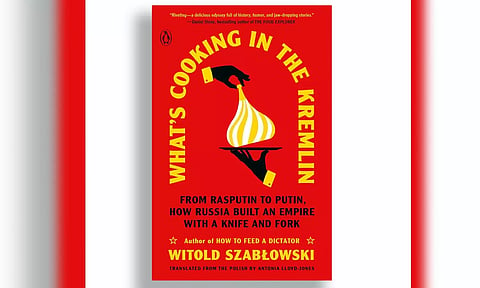Chef’s table: What’s cooking in Kremlin? A mix of propaganda, paranoia
By Jennifer Szalai
NEW YORK: Witold Szablowski describes a number of surprising dishes in his entertaining yet unnerving new book, “What’s Cooking in the Kremlin,” which explores the last century of Russian history through its food. But none is as surreal as the recipe for one of Lenin’s favourites. The instructions for making his “scrambled eggs using three eggs” orders you to break the eggs but not to beat them. What Lenin called “scrambled eggs” were actually fried eggs, with their yolks and whites intact — not scrambled at all.
Szablowski’s previous books include “How to Feed a Dictator” and “Dancing Bears”; as a Polish journalist born in 1980, he doesn’t have much nostalgia for the Soviet Union, though he has spent considerable time talking to people who do. The chapter about Lenin is mostly narrated by a Moscow tour guide who speaks wistfully of what might have happened if Lenin’s “dreams had come true.” (This “tour guide” turns out to be a composite of three people — a fact that is annoyingly slipped into the bibliography.) Szablowski eventually intervenes with his own skeptical interpretation of events, but much of the book, translated into chatty English by Antonia Lloyd-Jones, is given over to oral history for a reason. I began to think of Lenin’s scrambled eggs as a metaphor. The stories that people insist on telling show how propaganda works.
“It doesn’t matter if a story is true,” Szablowski writes. “What matters is that people believe it.” Of course, believing in a story becomes exceedingly hard to do when fiction runs up against the stubborn reality of hunger. Szablowski’s whimsical title doesn’t quite convey how sensitively he writes not just about food but also its terrible absence. In one chapter, a nonagenarian who survived the 1933 famine in Ukraine recalls how special government commissions went door to door to make sure that no one was storing food. Inspectors confiscated anything potentially edible, including candles, which desperate people had tried to make into soup. Another nonagenarian, who lived through the siege of Leningrad, resented the hippo at the zoo that continued to get fed every day, while she ate aspic that her mother made out of glue.
A lack of food tells an irrefutable truth. But food, as Szablowski shows, can also lie. Poison has a long history in Russian politics. Consequently, the chefs who cook for the Kremlin’s leaders are vetted by the security service and have a military rank. One of Stalin’s chefs refused to get his medicine from the pharmacy for state officials because he feared it might be poisoned. Lenin’s widow died in 1939 after eating a suspicious cake. “It is highly probable that the cake was sent to her by Stalin,” Szablowski writes.
And there were other, less lethal ways of using food as an instrument of deception. Szablowski recounts how lavish state receptions in the Brezhnev era masked the reality of empty store shelves and economic stagnation. A Kremlin chef who cooked feasts while the Soviet Union crumbled reminisces about how he and his colleagues were required to learn decorative techniques to transform a cucumber into a fence and a tomato into a rose. Sometimes the leaders themselves did what they could to help out with the show. Nikita Khrushchev, who was less able to handle his liquor as he grew older, had special thick-bottomed glasses made for him that looked like they contained a full shot of booze but in fact held little more than half.

